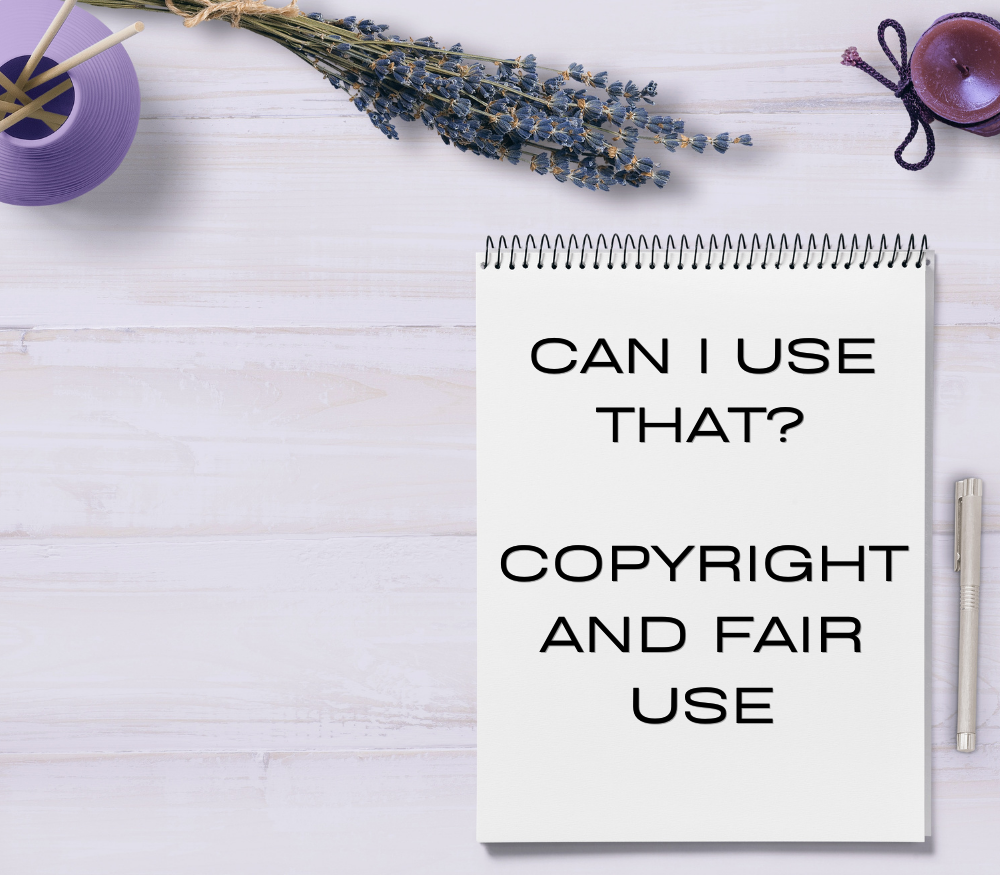In the publishing world and beyond, copyright is important for protecting the rights of creators. The US Copyright Office summarizes a copyright as “a type of intellectual property that protects original works of authorship as soon as an author fixes the work in a tangible form of expression.” A work is original if it is made by a human and has some level of creativity to it. This means you made something yourself. A work is fixed if it is in a form that is at least somewhat permanent, such as being written down, posted online, recorded, etc. A work does not need to be published nor registered with the US Copyright Office to be copyrighted. Even a handwritten journal full of poems or unreleased original songs on a computer would be protected by copyright in the US.
There are many instances in which it is practical and reasonable to use someone else’s work. A high school history teacher may want to share photographs of a major historical event to bring their lesson to life. A late night show may want to produce a satirical skit about a politician’s speech. A scientist may want to compile the findings of peers to supplement the publication of their latest research. You do not always need permission from or to pay the copyright owner in order to use their work. This is where fair use comes into play.
Fair use is the “legal doctrine that promotes freedom of expression by permitting the unlicensed use of copyright-protected works in certain circumstances.” In a nutshell, fair use allows you to use someone else’s work without getting their permission or paying them. While determining exactly what is or is not fair use can be tricky, Section 107 of the Copyright Act outlines the framework for deciding if the use of a copyrighted work is likely fair use. This framework is broken down into four parts.
Purpose and Character: Receiving money for use of someone else’s copyrighted work is not considered fair use. Your use is more likely to be considered fair use if it is for nonprofit educational purposes, but it is also important to consider if your use is transformative. According to the US Copyright Office, “transformative uses are those that add something new, with a further purpose or different character, and do not substitute for the original use of the work.”
Nature of Copyright Work: At the core of copyright is the protection of creative works (think novels, paintings, etc.), so fair use is generally more difficult to apply to such creative works than to more fact based works (think research papers, news reports, etc.).
Amount and Substantiality: Generally, the more of a copyrighted work you use, the higher risk of your use not being fair use. There are always exceptions though, and you should take care to avoid using parts of a copyrighted work that reveals its core ideas. If your use is essentially the spoiler of the original work, then why would someone read/watch/view/etc. the original work? This leads to the last piece of the framework about potential effects on the market for the copyrighted work.
Market Effects: If your use “harms the existing or future market for the copyright owner’s original work,” then it is unlikely to be covered by fair use. Simply put, your use should avoid hurting the chance of people paying for the original. Creators should reap the monetary rewards of their work, and copyright is here to help protect that.
While at face value these four factors are straightforward, every use of a copyrighted work is a unique situation and you should carefully examine each one. Many universities offer fair use checklists to help people determine if their use of a copyrighted work is likely to be considered fair use. For example, Columbia University Libraries’s fair use checklist is available here.
When you want to use any part of a copyrighted work, make sure to do your due diligence from the beginning to assess if your use is fair use. This can help protect you from potential legal issues down the road and ultimately fosters respect for the rights of creators.


Jane Sanford Harrison
What about quoting part of a a poem, but giving authors attribution?
Jane Sanford Harrison
What about quoting part of a a poem, but giving authors attribution?